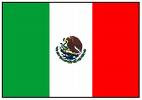
The kaleidoscope was invented by Sir David Brewster, a Scottish scientist, in 1816, and patented (GB 4136) by him in 1817. He named his invention after the Greek words, kalos or beautiful, eidos or form, and scopos or watcher. So kaleidoscope means the beautiful form watcher. Brewster's kaleidoscope was a tube containing loose pieces of colored glass and other pretty objects, reflected by mirrors or glass lenses set at angles, that created patterns when viewed through the end of the tube.
Later in the early 1870’s, an American called Charles Bush (1825-1900) improved upon the kaleidoscope and started the kaleidoscope fad. Charles Bush was granted patents in 1873 - 1874 related to improvements in kaleidoscopes, kaleidoscope boxes, objects for kaleidoscopes (US 143,271), and kaleidoscope stands. Bush was the first person to mass manufacturer his "parlor" kaleidoscope in America.




No comments:
Post a Comment